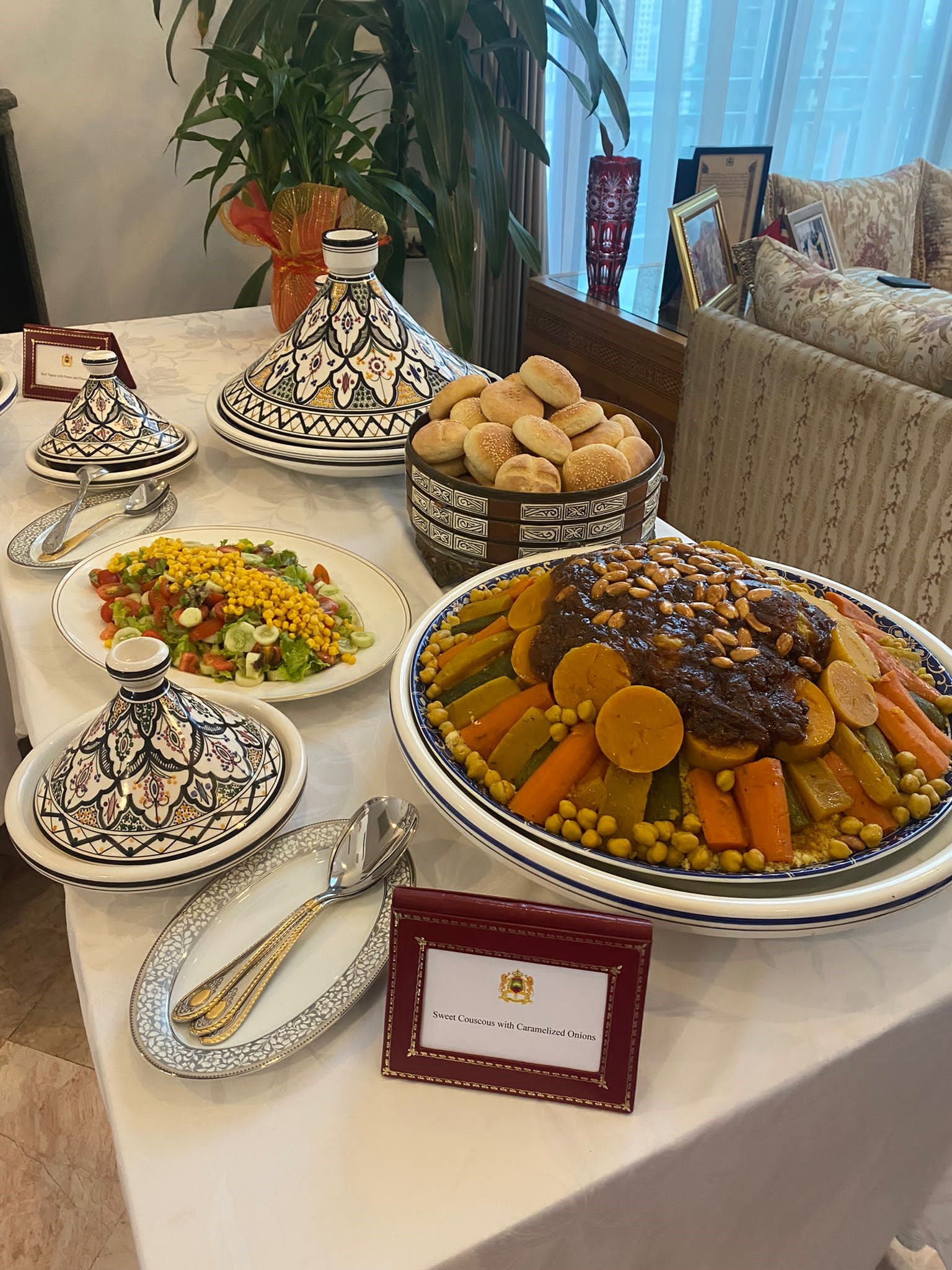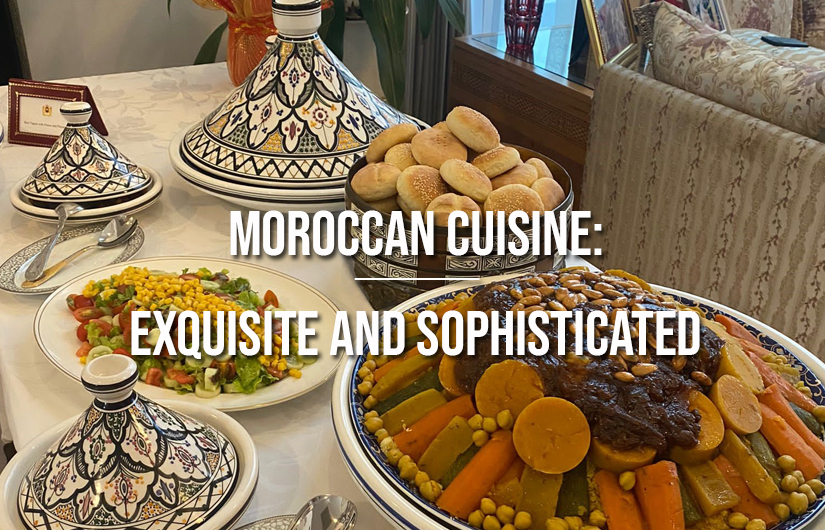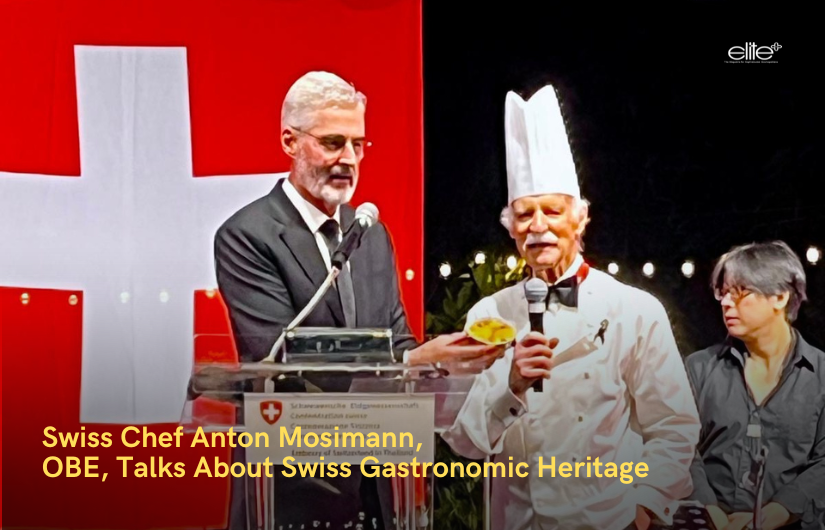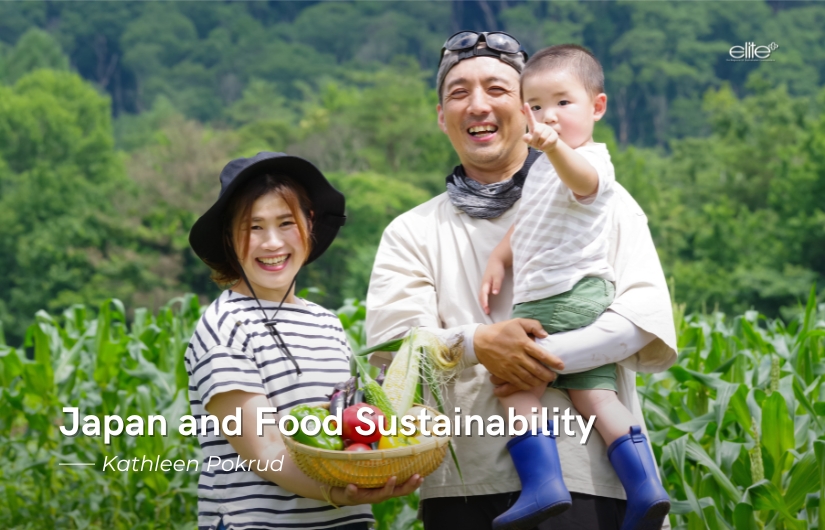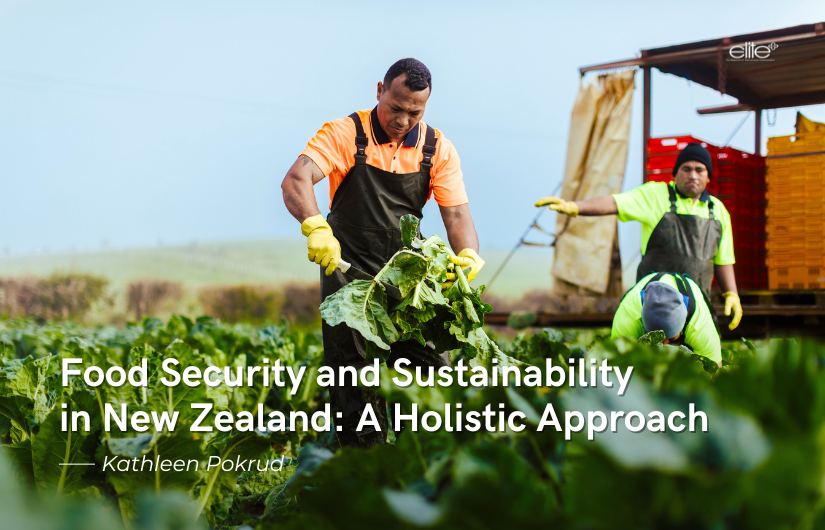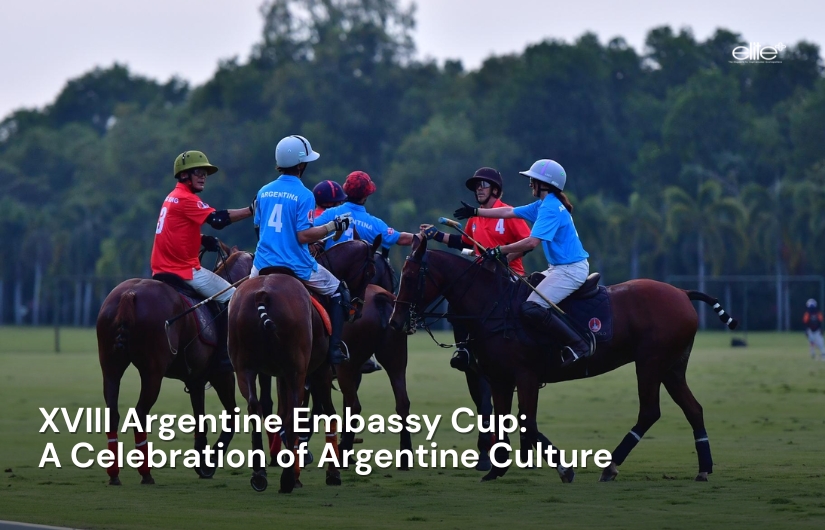Moroccan gastronomy is highly respected worldwide due to its unique fusion of historical and geographical elements. Morocco is in the UNESCO Representative List of the Intangible Cultural Heritage of Humanity of Mediterranean diet. The cuisine combines Arab and Amazigh customs with inspiration drawn from Andalusia and the Mediterranean, resulting in a distinctive blend of flavours and cooking styles. HE Abderrahim Rahhaly, Ambassador of the Kingdom of Morocco in Bangkok shared with me his view about the exquisite taste of Moroccan cuisine and its history of sophistication.
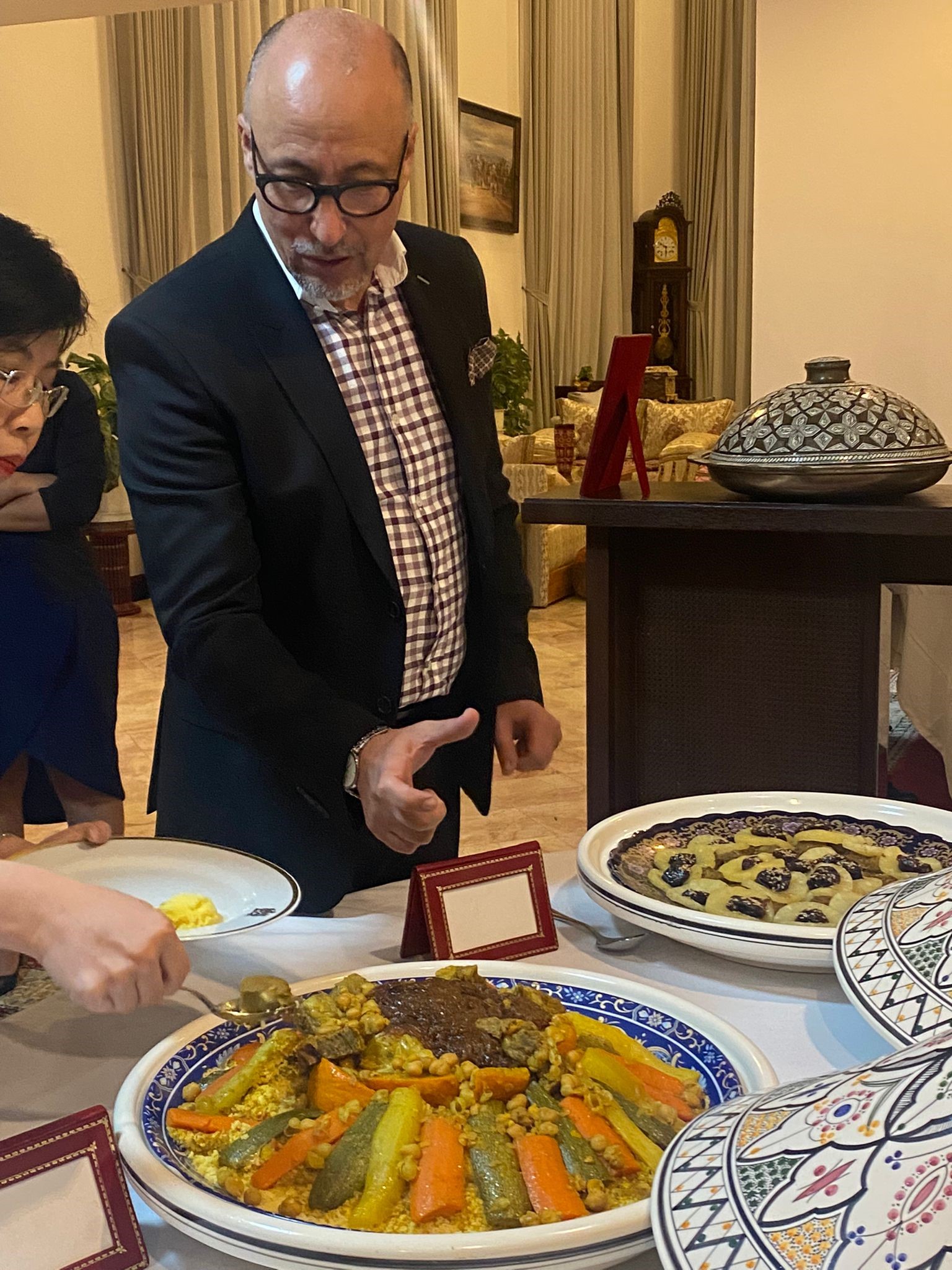
Ambassador Abderrahim began by saying, “The history of Moroccan cuisine is as sophisticated and diverse as its aromas and flavours are. The Kingdom of Morocco has been a meeting place of many civilizations and dynasties, which largely contributed to making a rich cuisine. Moroccan food reflects the Kingdom’s longstanding history that combines many years of influence of Amazigh, Roman, Phoenician, Carthaginian and Arab cultures”.
“As traders used to travel through Morocco, new ingredients were brought to the country and have been used up to the present by Moroccans in their dishes. Arabs brought new grain-based food commodities including bread. New spices such as cinnamon, ginger, saffron, cumin and caraway were introduced to the population. A Jewish community introduced various pickling and preservation techniques for fruits and vegetables.”
Ambassador Abderrahim also explained, “The diversity in Moroccan cuisine is derived from its privileged geographical position, its ecosystem diversity and the local people’s creativity to enhance it further”.
“With its various ingredients and cooking techniques, Moroccan cuisine is recognized as an ancient cuisine with significant nutritional value. It has been recognised among the best international kitchens in the world. Moroccan chefs usually top the list of regional cooking contests and rank best at the global level.”
In 2013, the United Nations Educational and Cultural Organization (UNESCO) included Morocco in the Representative List of Intangible Cultural Heritage of Humanity of Mediterranean diet. Such diet involves skills, knowledge, rituals, symbols and traditions concerning crops, harvesting, fishing, animal husbandry, conservation, processing, cooking and, particularly, the sharing and food consumption.
In 2020, UNESCO put the Moroccan Couscous on the list of Intangible Cultural Heritage of Humanity as it recognized the knowledge, know-how and practices relevant to cooking and serving couscous.
Ambassador Abderrahim and many Moroccans champion the uniqueness of Moroccan food
“Moroccan cuisine mixes diverse flavours and ingredients to create a delightful gastronomic experience combining sweet and sour tastes. It is known for its balance in terms of spices and components. One dish can ensure a thoroughly healthy meal.”
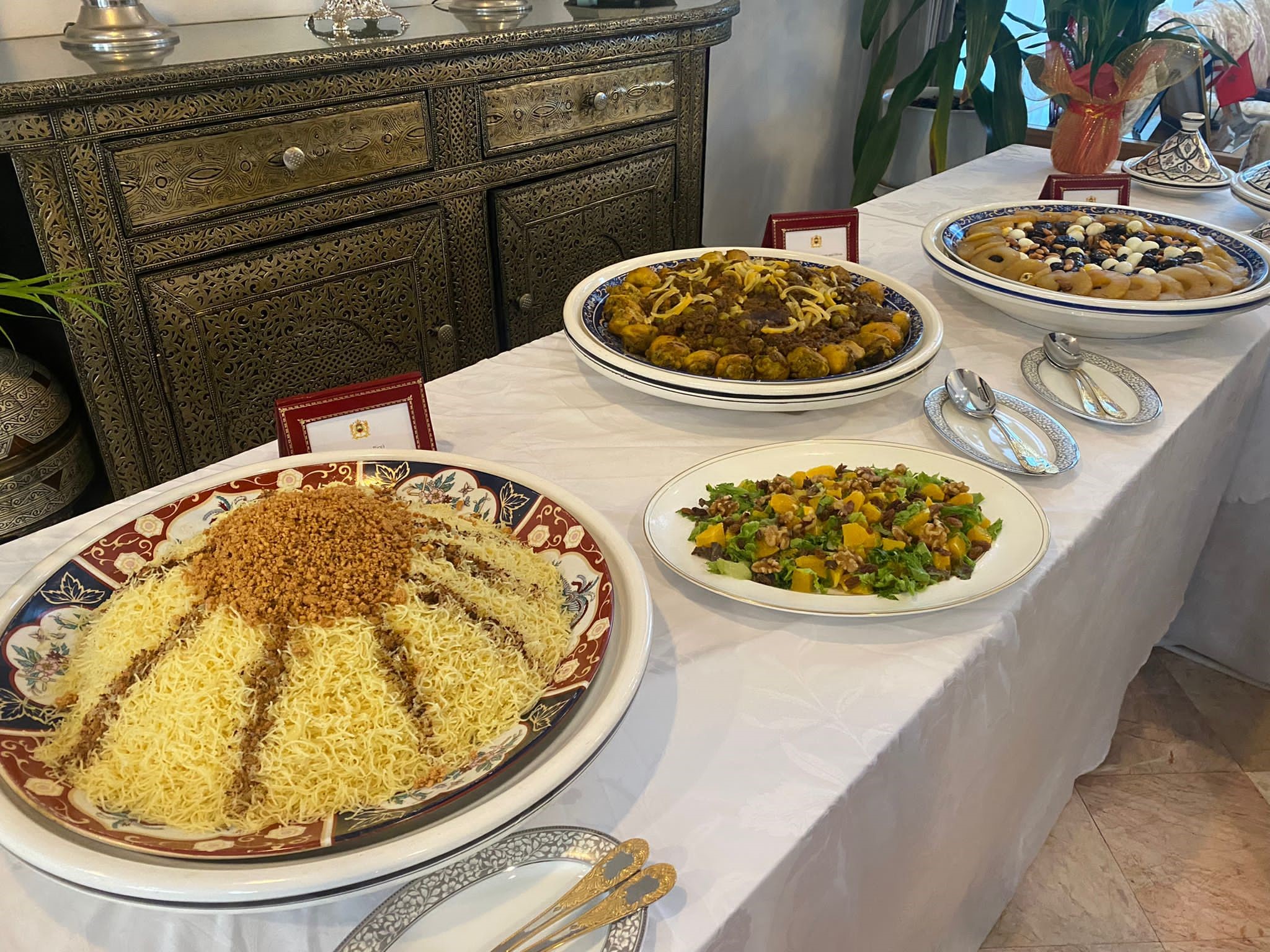
Ambassador Abderrahim further explained that the most used spices in Moroccan cooking include cumin, paprika, cinnamon, saffron, turmeric and ginger. Other seasonings contain parsley, cilantro, onions, garlic and pepper. A blend of herbs and spices made by spice salesmen, ‘Ras-al-hanut’, is also widely used in cooking.
Many ingredients are essential to Moroccan cuisine, such as preserved lemon, pickled olives and lemon juice. They are mostly incorporated in chicken and meat dishes.
Moroccans appreciate olive oil and use a generous amount of it in their dishes. They also use preserved salted butter, ‘smen’, often mixed with dried herbs, which provide a strong flavour to dishes such as couscous and soups.
Moroccans also use flavoured waters distilled from fresh rose and orange blossom in cookies. Rose water, ‘ma ward’, and orange-flower water, ‘ma zher’, are used in cakes and pastries.
As Moroccan cuisine has a long history, it is the outcome of centuries of exchange between the Kingdom of Morocco and the rest of the world. Moroccan dishes have been influenced by Amazigh, Arab-Andalusian, Middle Eastern and Jewish cuisine.
Ambassador Abderrahim clarified traditional Moroccan food culture and its historical influences. “For a particular Moroccan style of a meal, guests are introduced to a three course meal with starter, main course and dessert”.
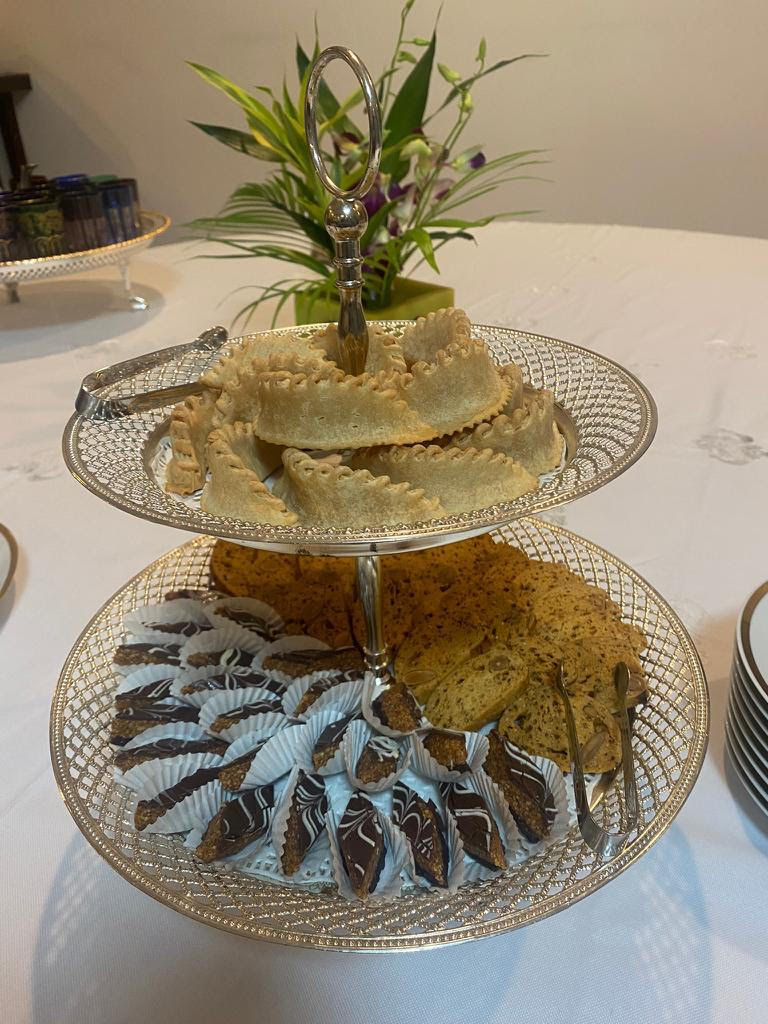
“A starter will include raw/cooked salads, together with ‘Briouates’ and ‘Pastilla’, which are sweet or salty puff pastry filled with meat, chicken lamb, fish or shrimp. Then, the typical main course will include either ‘Couscous’; ‘Tajine’, vegetables and meat cooked in an earthenware pot or grilled meat, mostly lamb, called ‘Mechoui’. While ‘Couscous’ and ‘Mechoui’ have fixed recipes, ‘Tajine’ remains creative. It sometimes combines sweet and salt flavours, blends of spices and herbs such as cinnamon, saffron, ginger or coriander. ‘Mechoui’ is usually prepared for big occasions, including festivities and ceremonies. The meal will end with a dessert such as Moroccan cakes made of a blend of almond, orange blossom water, honey and cinnamon, usually served with mint tea.
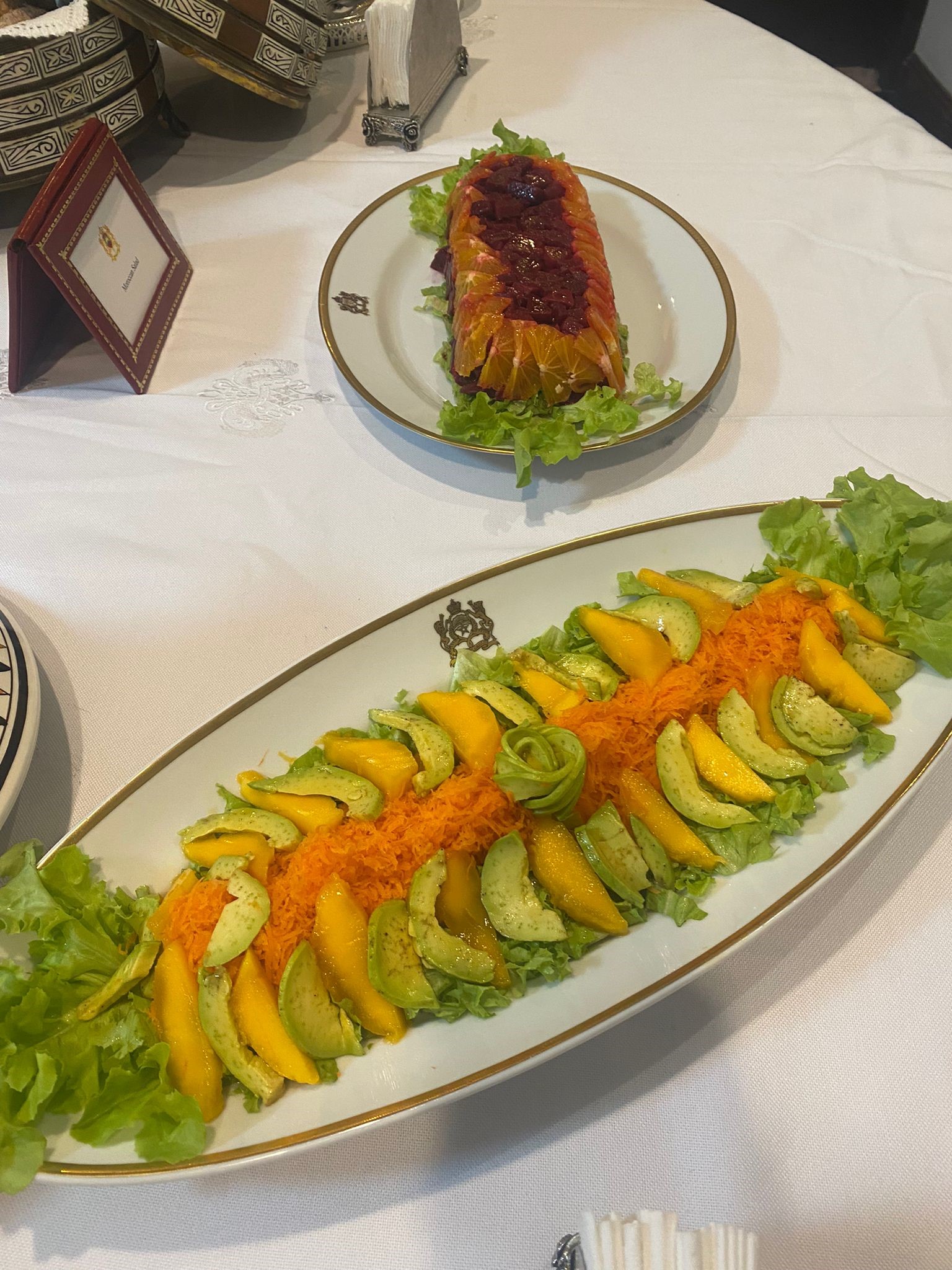
As our interview drew to a close, Ambassador Abderrahim proudly emphasized, “Moroccan cuisine is sophisticated and requires at least a basic knowledge of Moroccan culture and certain level of expertise in the choice of ingredients and spices. Morocco’s national dishes require knowhow and patience. Spices and dressings are used according to each type of dish to be cooked.”
He ended by reiterating, “Despite the modernization of national culture, Moroccan cuisine has been influenced by other world cooking traditions. However, Moroccan cuisine still preserves its originality and local specificity. Many world renowned chefs recognise the peculiarity and delicacy of Moroccan cuisine, which makes the Kingdom of Morocco, a land of exquisite taste, generous hospitality and warm welcome.”
Key representative Moroccan dishes
Couscous
Couscous is a national dish enjoyed by everyone in Morocco. It is often served on Fridays after prayers. It is composed of wheat semolina that is cooked in a steamer and mixed either with preserved salted butter or olive oil as well as several vegetables.
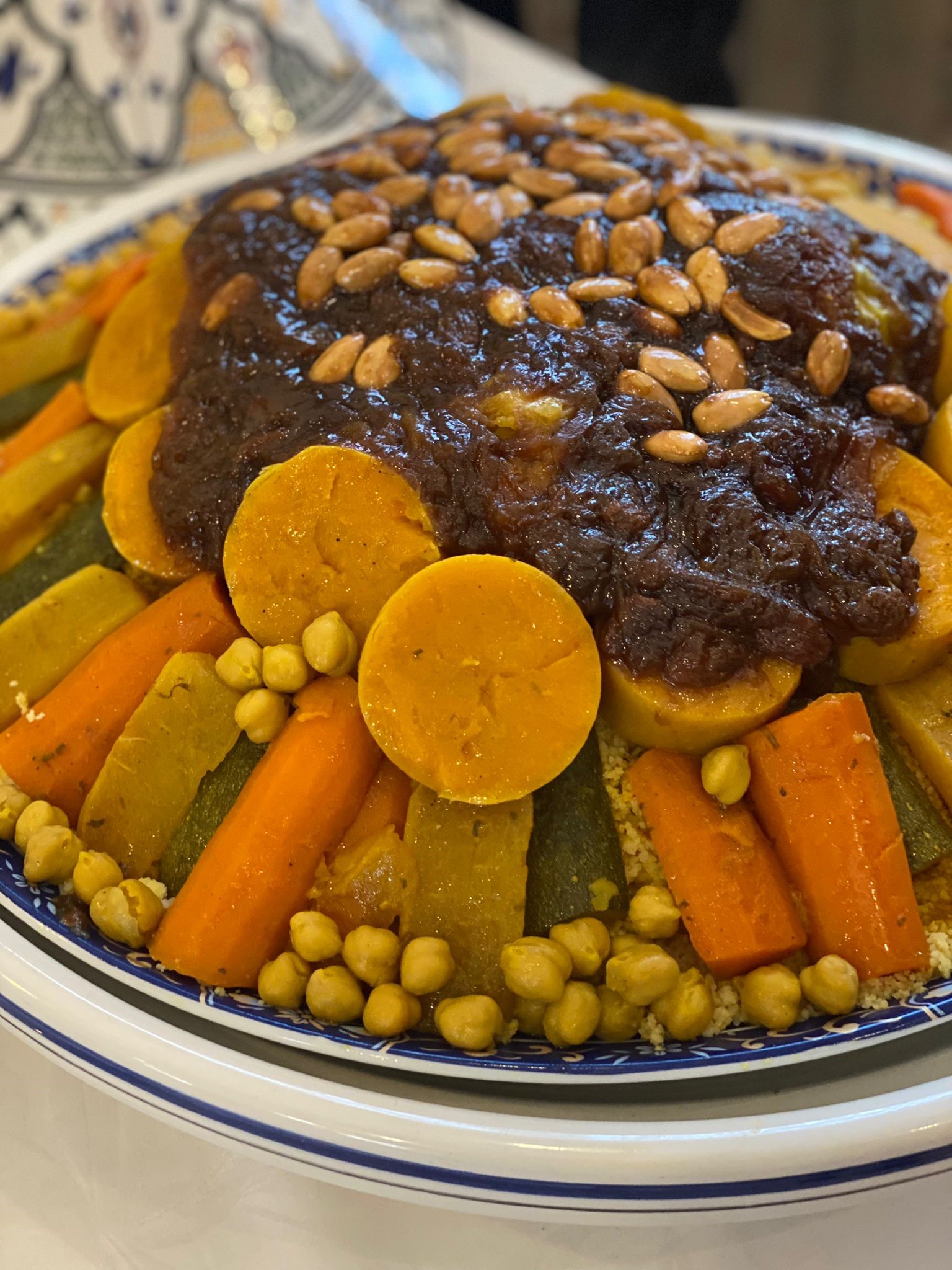
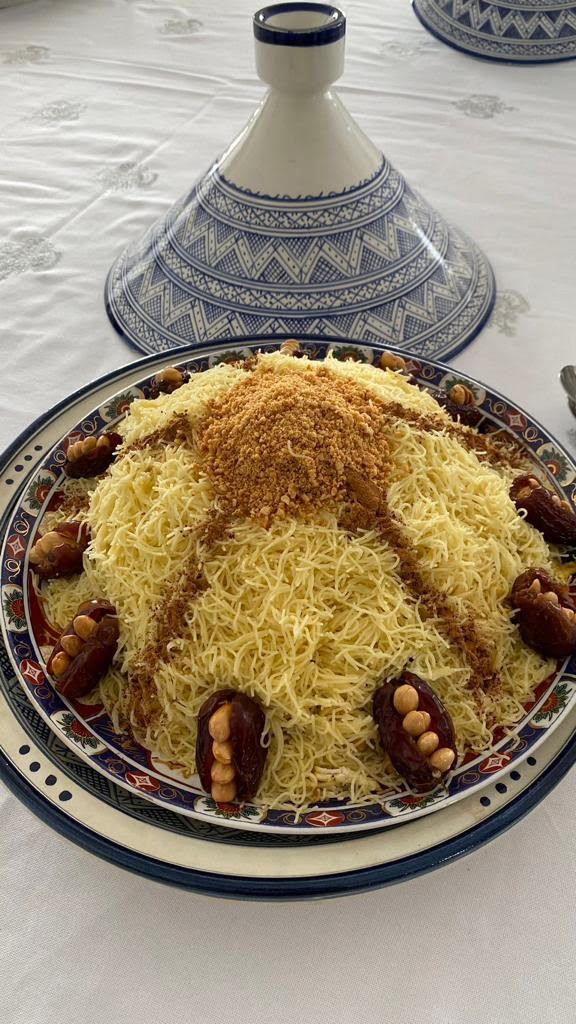
Seffa (sweetened semolina )
Tajine
Tajine combines numerous spices such as coriander, cinnamon, nutmeg and cumin. What makes Tajine a particular dish is its diversity and freedom of ingredients choice. Some of common Moroccan Tajines include Tagine of Lamb with zucchini, Lamb Tagine with Artichokes, Lamb/Beef Prunes and Almonds Tajine, Lamb Tagine with Eggplant, Beef Tagine with preserved lemons, Tajine of sardine meatballs, Fish Tagine with olives and lemons, Chicken Tagine with preserved lemons and olives and Chicken Tagine with sweet potatoes.
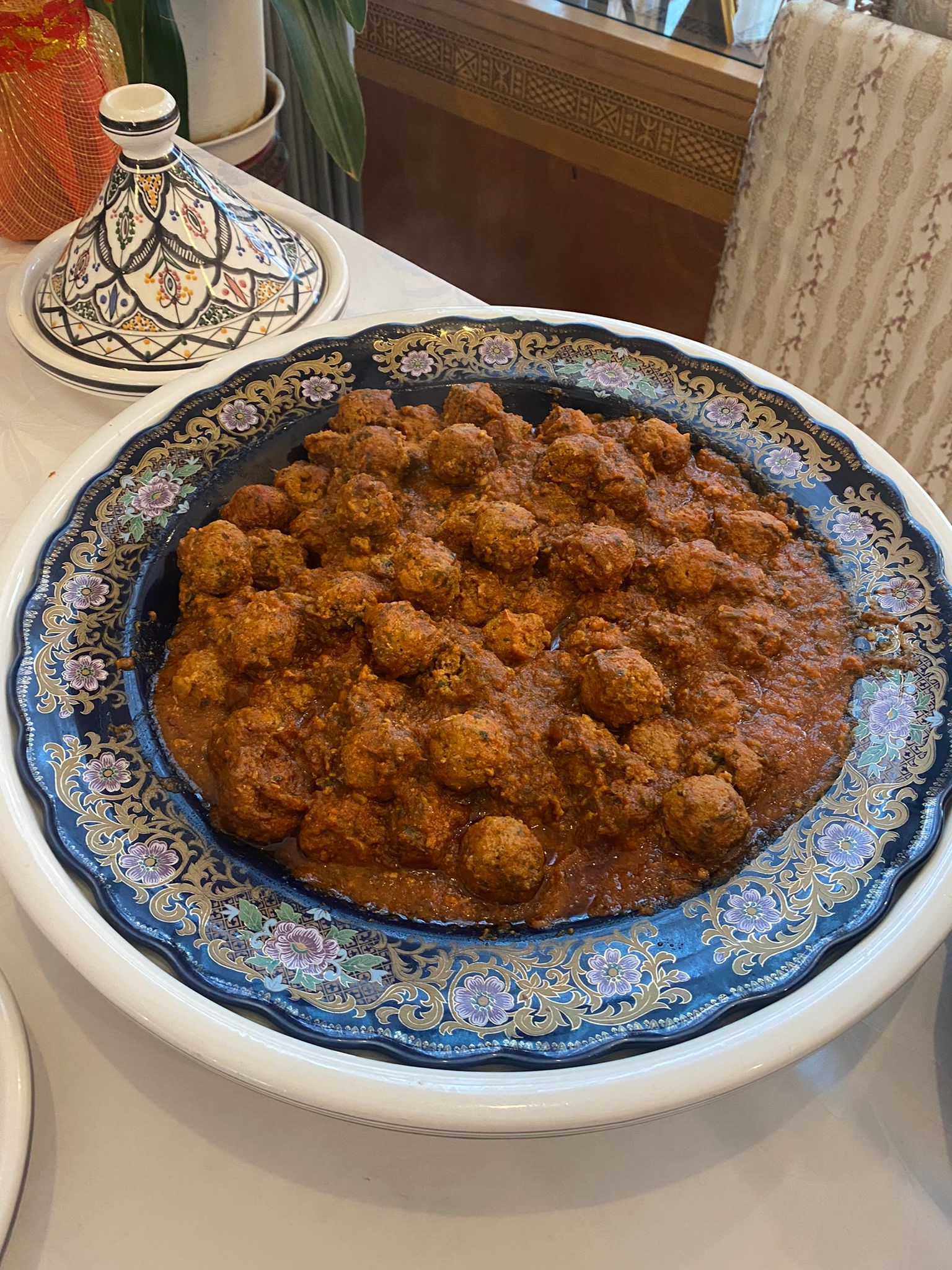
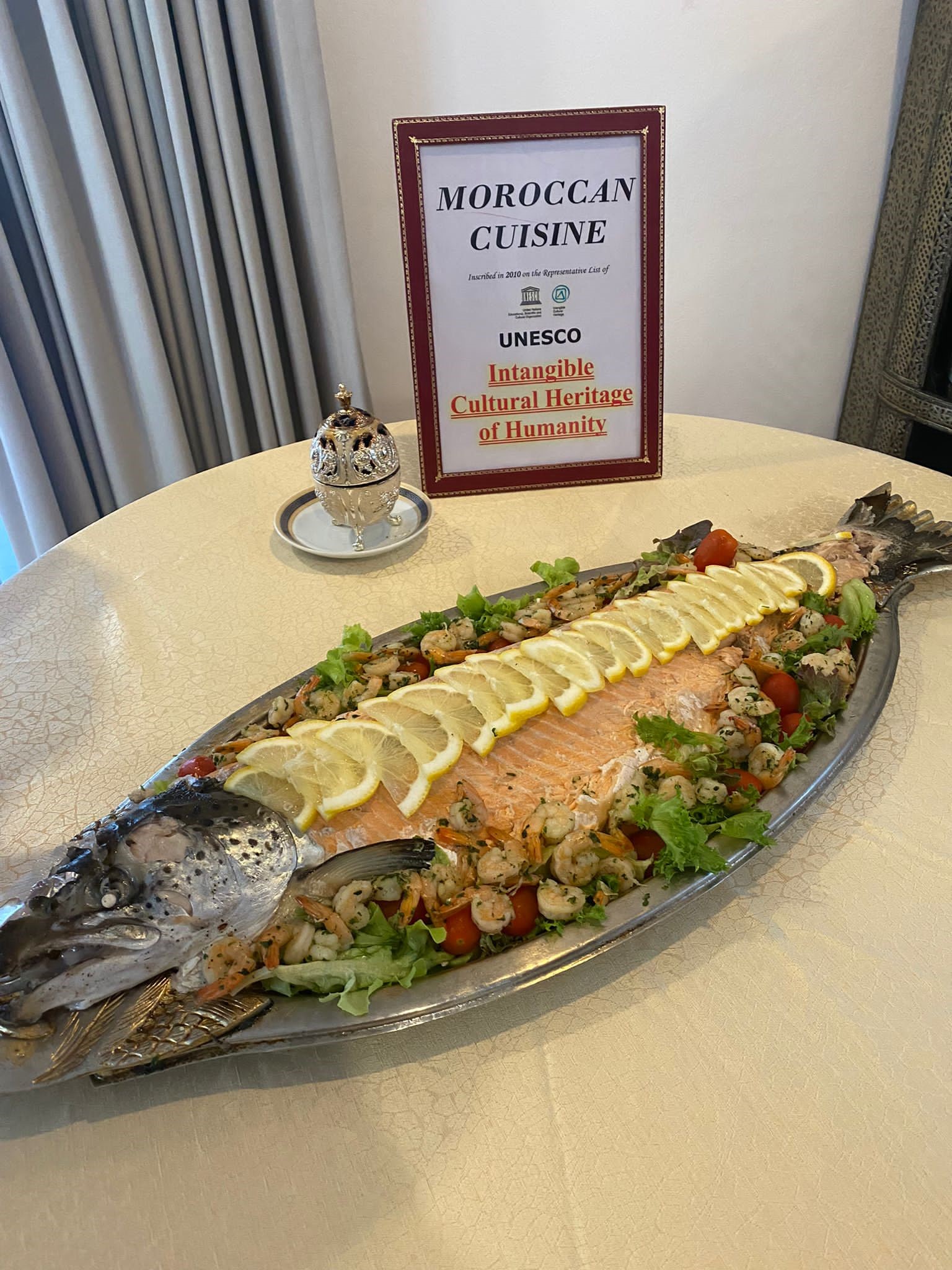
Tanjia
Tanjia is a meat dish, cooked in a clay jar. This traditional Moroccan recipe is well known in Marrakech. A tightly closed jar is embedded in the embers of an oven. There are three main and original Tanjias, Meat Tanjia, Chicken Tanjia and Pigeon Tanjia.
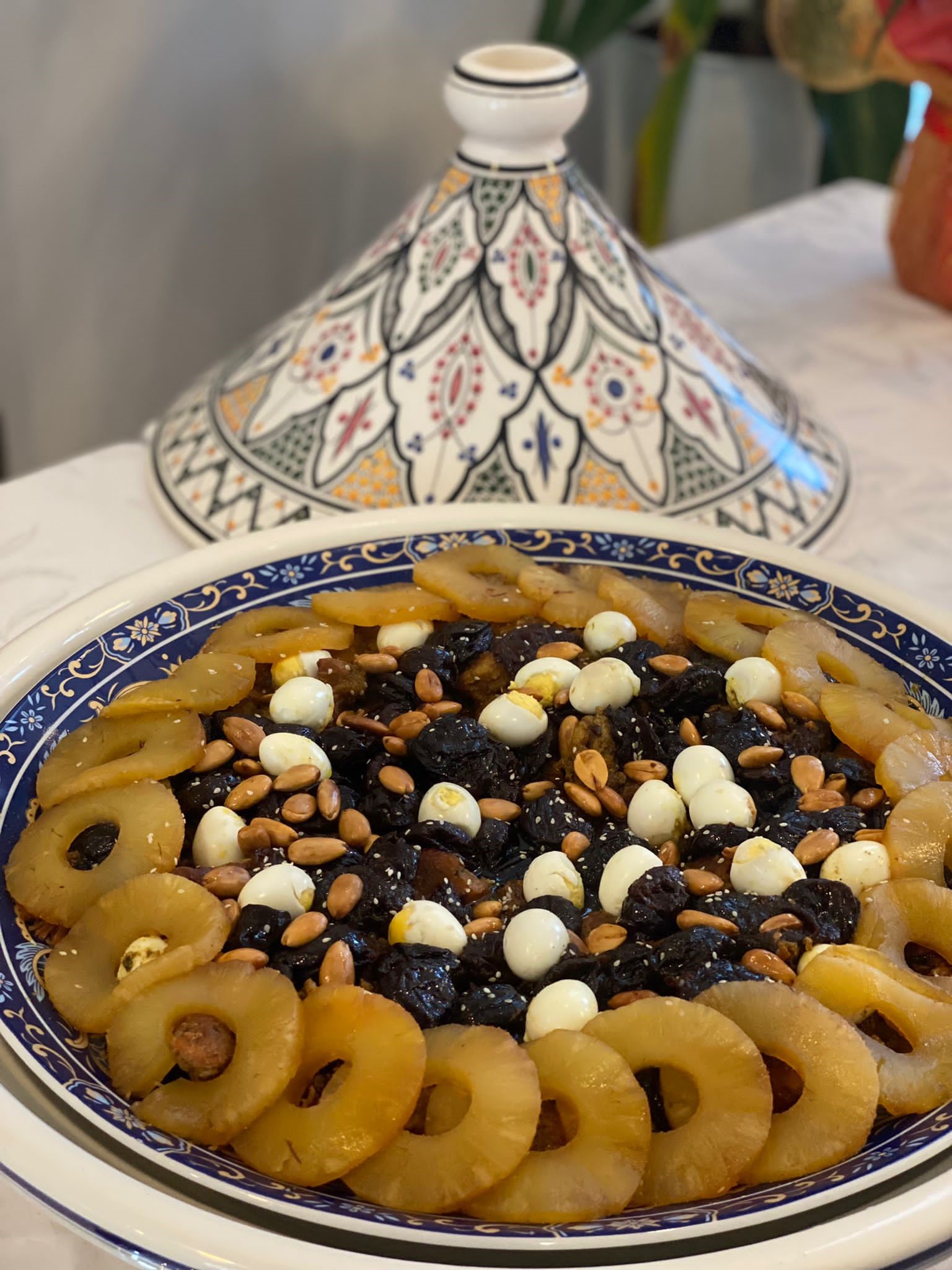
Chicken Rfissa
A typical Moroccan dish that is prepared on special occasions. It requires a fairly long timespan of preparation that results in a tasty farm chicken dish along with lentils, fenugreek and many spices and herbs.
Harira
This is the Moroccan traditional and original soup. It is served every day during Ramadan, the month of fasting for Muslims. It is made of tomatoes, vegetables, meat, onion, lentils, peas and beans. Harira is served in bowels with dates, dried figs, boiled eggs, pancakes with honey and pastries.
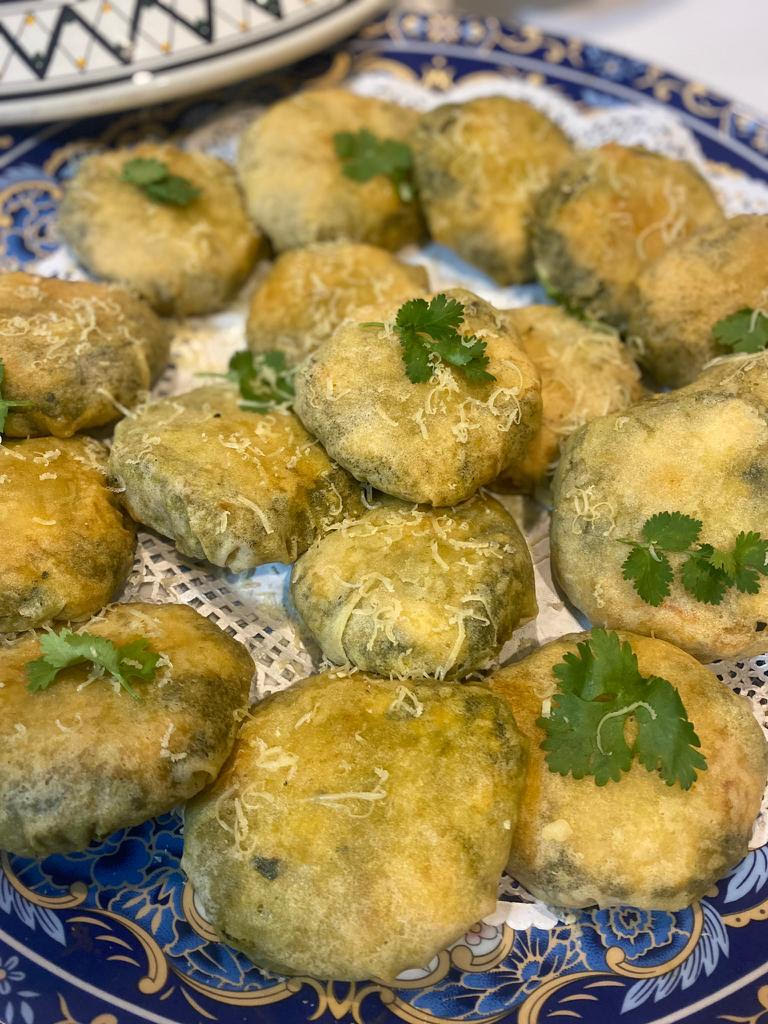
Pastilla
It is a chicken or seafood pie made with puff pastry, vermicelli, almond, cinnamon, coriander and parsley.
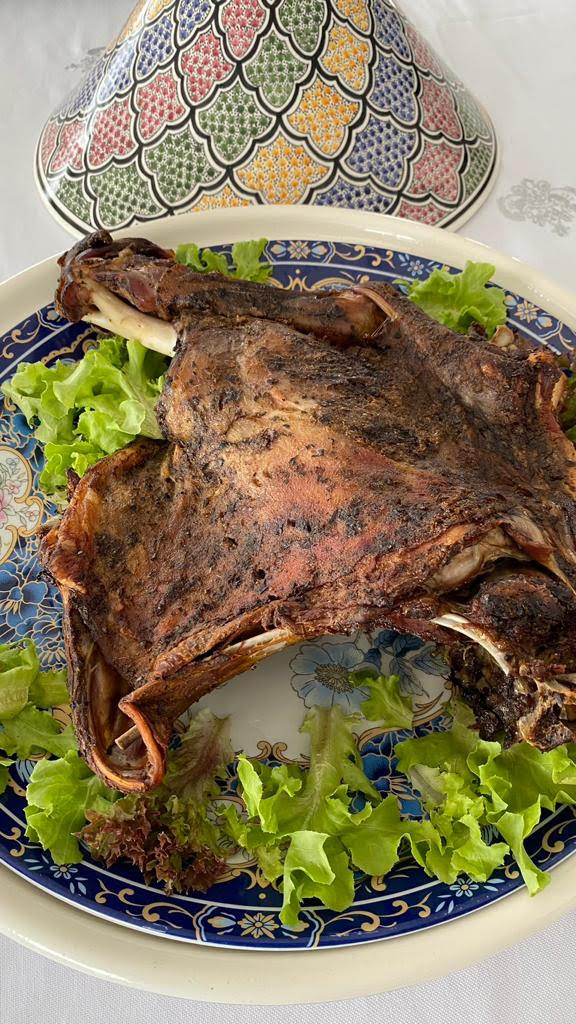
Mechoui
It is a full or half grilled lamb that is usually served with salads and roasted or grilled vegetables.
Mint Tea
Mint tea is the main beverage in Morocco. It is an essential drink on every Moroccan family table and served any time of the day with Moroccan cakes. Moroccan Mint Tea is served in a teapot. It is made withf fresh mint, sugar, water and gunpowder tea. Moreover, other herb ingredients might be added in the teapot such as verbena, sage, absinth or thyme.
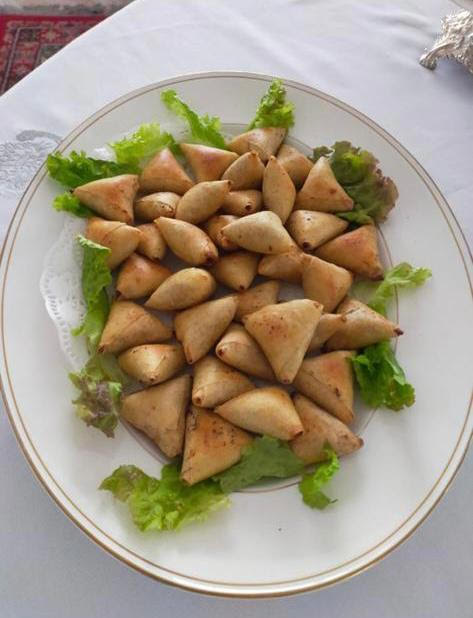
Briouate
Served as an appetizer or as a side dish in the form of small triangular pastries, mainly made with a meat, chicken or fish filling.
Chebakia
Another Moroccan pastry that looks like a small pretzel, which is usually dipped in honey and sprinkled with sesame seeds.
